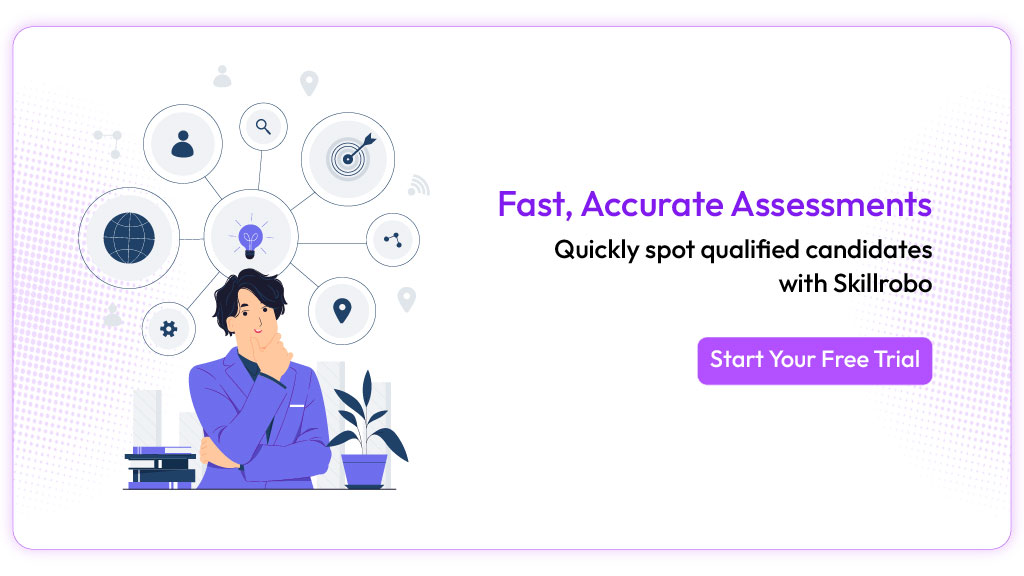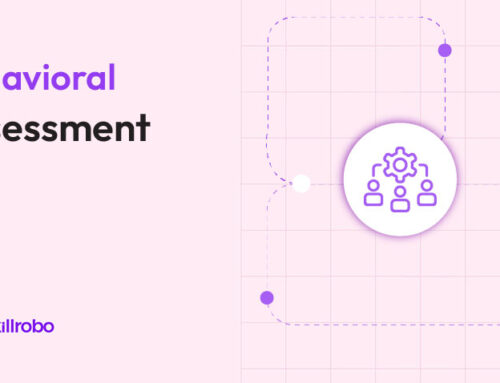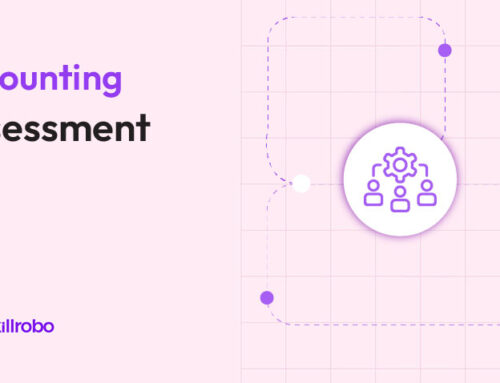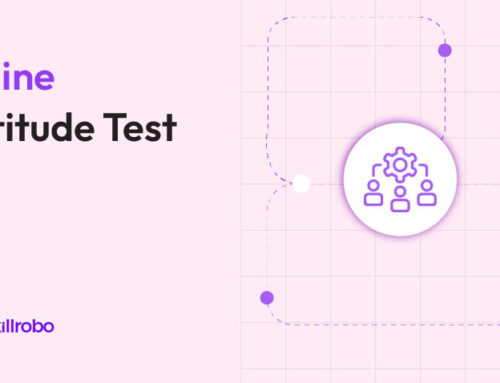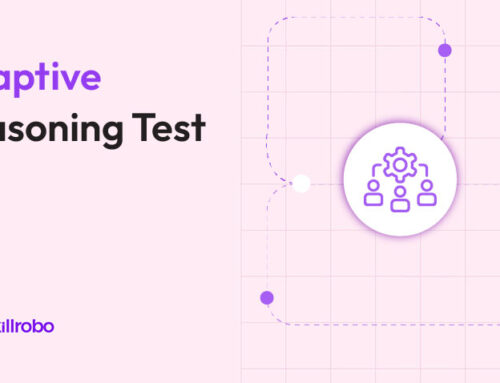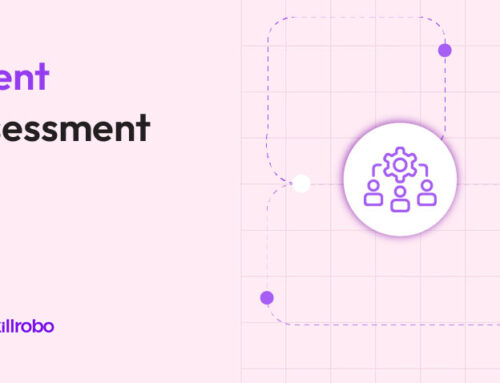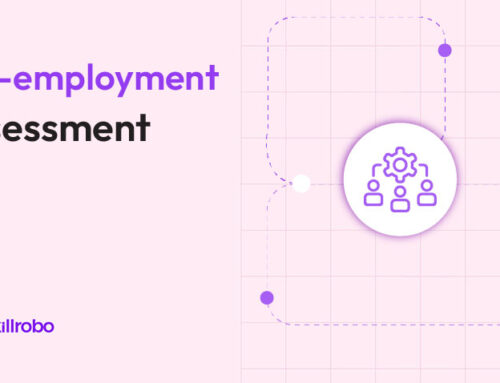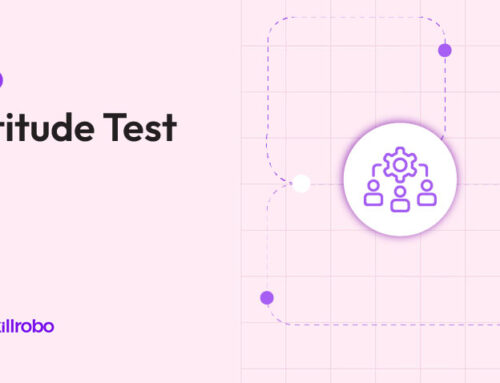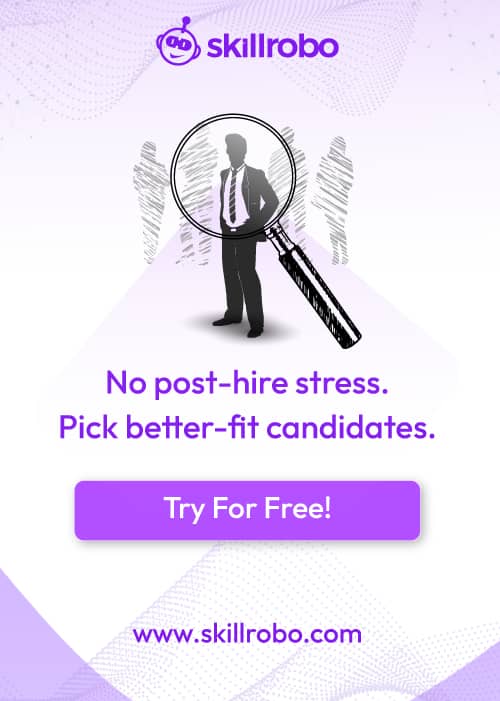Table of Contents
Related articles

Why Analytical Skills Matter for Workforce Success
Employees who excel in analytical thinking are key to organizational growth. Analytical skills enable employees to interpret data, identify trends, and make informed decisions, whether in finance, technology, operations, or leadership roles. However, resumes and interviews often fail to accurately gauge these abilities. This is where a dedicated skills assessment framework becomes invaluable.
By leveraging advanced skills assessment tools, recruiters and HR leaders can objectively measure analytical aptitude across roles and career stages. Integrating talent assessment tools into the evaluation process ensures companies build agile, adaptable teams equipped for long-term success.
Core Areas of Analytical Assessment
A comprehensive skills assessment test for evaluating analytical skills should cover multiple
Numerical Reasoning:
Evaluates a candidate’s ability to work with numbers, perform financial calculations, analyze ratios, percentages, and solve quantitative problems. This is essential for roles in finance, operations, and analytics where data accuracy drives decisions.
Logical Reasoning:
Measures the ability to recognize patterns, apply deductive logic, and solve abstract problems that require structured thinking. It is highly relevant for technology, IT, consulting, and management positions where problem-solving agility is crucial.
Verbal Reasoning:
Assesses a candidate’s comprehension, vocabulary, grammar, and logical interpretation of written passages. Strong verbal reasoning is key for roles involving client communication, legal interpretation, report writing, and leadership decision-making.
Data Interpretation:
Tests how well candidates extract insights from complex charts, tables, graphs, and data sets. This skill is crucial in roles requiring analytical reporting, business intelligence, and data-driven strategy formulation.
Situational Judgment:
Presents realistic job-based scenarios that require candidates to evaluate choices, prioritize actions, resolve conflicts, and make sound decisions. This dimension supports leadership, customer service, and team management assessments.
When delivered through online aptitude tests and integrated with talent assessment platforms, these assessments generate deeper, data-driven insights into a candidate’s potential and job readiness.
Sample Analytical Skills Assessment Questions
Numerical Reasoning
Numerical reasoning measures a candidate’s ability to work with numbers, analyze data, and solve quantitative problems. It’s essential for roles in finance, data analysis, operations, and any job requiring mathematical decision-making.
- A company’s revenue increased from $1.2M to $ 1.5 M. What is the percentage increase?
A) 20%
B) 25%
C) 30%
D) 18%
Answer: B) 25% - If 4 workers complete a task in 10 days, how many days would 8 workers take?
A) 8 days
B) 6 days
C) 5 days
D) 4 days
Answer: C) 5 days - Convert 0.65 into a percentage.
A) 60%
B) 65%
C) 75%
D) 80%
Answer: B) 65% - A product is discounted by 15% from $400. What is the new price?
A) $320
B) $340
C) $350
D) $360
Answer: B) $340 - A factory produces 300 units daily. How many units are produced in 12 days?
A) 3,200
B) 3,400
C) 3,600
D) 3,800
Answer: C) 3,600 units - If sales drop by 20% from $500K, what is the new sales figure?
A) $450K
B) $400K
C) $350K
D) $420K
Answer: B) $400K - An investment grows from $8,000 to $10,000. What is the growth rate?
A) 20%
B) 22%
C) 25%
D) 28%
Answer: C) 25% - A shipment of 1,200 items has a 5% defect rate. How many defective items?
A) 50
B) 55
C) 60
D) 65
Answer: C) 60 items - If the price increases from $50 to $65, what is the absolute increase?
A) $10
B) $15
C) $20
D) $25
Answer: B) $15 - An employee works 7 hours daily for 5 days. How many total weekly hours?
A) 30
B) 32
C) 35
D) 40
Answer: C) 35 hours
Logical Reasoning
Logical reasoning evaluates pattern recognition, deductive thinking, and problem-solving agility. This skill is critical for technology, consulting, management, and strategic roles that require analytical and abstract reasoning.
- What comes next in the sequence: 2, 4, 8, 16, ___?
A) 24
B) 32
C) 40
D) 48
Answer: B) 32 - Find the odd one: Triangle, Square, Circle, Cylinder.
A) Triangle
B) Square
C) Circle
D) Cylinder
Answer: D) Cylinder - If all pencils are stationery, and some stationery items are not pens, which statement is true?
A) All stationery items are pencils.
B) Some stationery items are not pencils.
C) No stationary items are pens.
D) All stationery items are pens.
Answer: B) Some stationary items are not pencils. - A manager assigns tasks every 3rd day starting Monday. Which day will the 5th assignment fall on?
A) Wednesday
B) Friday
C) Saturday
D) Sunday
Answer: B) Friday - Which number completes the series: 5, 10, 20, 40, ___?
A) 60
B) 70
C) 80
D) 90
Answer: C) 80 - Which word does not belong: Apple, Orange, Carrot, Banana?
A) Apple
B) Orange
C) Carrot
D) Banana
Answer: C) Carrot - What comes next: A, C, F, J, O, ___?
A) Q
B) R
C) U
D) V
Answer: C) U - Which shape does not belong: Cube, Sphere, Pyramid, Square?
A) Cube
B) Sphere
C) Pyramid
D) Square
Answer: D) Square - Find the missing number: 3, 6, 11, 18, ___?
A) 24
B) 25
C) 27
D) 30
Answer: C) 27 - Which comes next: Mon, Wed, Fri, ___?
A) Sun
B) Sat
C) Mon
D) Tue
Answer: C) Mon
Verbal Reasoning
Verbal reasoning tests comprehension, vocabulary, grammar, and logical interpretation of written text. It’s key for roles in leadership, customer service, legal, compliance, and any function involving written or spoken communication.
- Select the synonym for “Ambiguous”:
A) Clear
B) Unclear
C) Definite
D) Precise
Answer: B) Unclear - Choose the correctly spelled word:
A) Occurence
B) Occurrence
C) Occurrance
D) Ocurence
Answer: B) Occurrence - Complete the sentence: “The committee reached a ____ conclusion after much deliberation.”
A) divided
B) strong
C) unanimous
D) uncertain
Answer: C) unanimous - Which word is the opposite of “Transparent”?
A) Opaque
B) Bright
C) Translucent
D) Shiny
Answer: A) Opaque - Select the synonym for “Benevolent”:
A) Harsh
B) Selfish
C) Kind
D) Cruel
Answer: C) Kind - Choose the correct word to complete: “The new policy was met with widespread _____.”
A) Approval
B) Rejection
C) Negligence
D) Ambiguity
Answer: A) Approval - Identify the antonym for “Optimistic”:
A) Positive
B) Negative
C) Hopeful
D) Cheerful
Answer: B) Negative - Which sentence is grammatically correct?
A) She don’t like coffee.
B) He isn’t going today.
C) They was late yesterday.
D) I am not goes there.
Answer: B) He isn’t going today. - Complete the sentence: “His explanation was ____ and easy to follow.”
A) confusing
B) vague
C) coherent
D) complicated
Answer: C) coherent - Which word best replaces “Reluctant” in this sentence: “He was reluctant to accept the offer.”
A) Eager
B) Unwilling
C) Excited
D) Prompt
Answer: B) Unwilling
Data Interpretation
Data interpretation assesses a candidate’s ability to extract insights from charts, tables, and graphs. It’s crucial for roles in business intelligence, reporting, analytics, marketing, and operations management.
- A chart shows sales growth of 10%, 15%, 20%, and 25% over four quarters. What is the average growth?
A) 15%
B) 18%
C) 17.5%
D) 20%
Answer: C) 17.5% - If the table shows inventory of 150 units, with 60 units sold, how many remain?
A) 90 units
B) 100 units
C) 60 units
D) 120 units
Answer: A) 90 units - A graph depicts revenue dips every Q3. What might this suggest?
A) Consistent growth
B) Seasonal sales pattern
C) Economic crisis
D) Random fluctuation
Answer: B) Seasonal sales pattern - In a pie chart, if Marketing accounts for 25%, what fraction is this?
A) 1/2
B) 1/3
C) 1/5
D) 1/4
Answer: D) 1/4 - A report shows monthly production: Jan – 500, Feb – 600, Mar – 700. What’s the average?
A) 550
B) 650
C) 600
D) 700
Answer: C) 600 - A bar chart shows profits of $200K, $250K, $300K, and $350K over 4 years. What’s the total profit?
A) $1.2M
B) $900K
C) $1.1M
D) $800K
Answer: A) $1.2M - If a department reduced errors from 80 to 60, what is the percentage reduction?
A) 20%
B) 25%
C) 30%
D) 40%
Answer: B) 25% - A stacked bar shows that 40% of projects were delayed, 30% on time, and 30% early. What’s the highest category?
A) On time
B) Early
C) Delayed
D) Equal
Answer: C) Delayed - A pie chart shows HR – 10%, Finance – 30%, Sales – 60%. Which department has the smallest share?
A) Finance
B) Sales
C) HR
D) All equal
Answer: C) HR - A table shows expenses: Rent – $1,000, Salaries – $3,000, Utilities – $500. What’s the total?
A) $4,000
B) $3,500
C) $4,500
D) $5,000
Answer: C) $4,500
Situational Judgment
Situational judgment tests present realistic work scenarios to evaluate decision-making, conflict resolution, interpersonal skills, and emotional intelligence. They are widely used for leadership, customer-facing, and team management roles.
- An employee repeatedly misses deadlines. What’s your first action?
A) Issue a formal warning immediately.
B) Ignore the situation.
C) Discuss performance privately and identify causes.
D) Escalate to HR directly.
Answer: C) Discuss performance privately and identify causes. - A customer demands a refund outside policy limits. What do you do?
A) Decline the request immediately.
B) Offer a full refund to avoid conflict.
C) Explain the policy while exploring alternative solutions.
D) Blame the customer for misunderstanding.
Answer: C) Explain policy while exploring alternative solutions. - A teammate disputes your proposal. What should you do?
A) Dismiss their objection.
B) Encourage open dialogue to reach a consensus.
C) Escalate the issue to management.
D) Stick firmly to your opinion.
Answer: B) Encourage open dialogue to reach a consensus. - You spot an error that may delay a project. What’s your response?
A) Ignore it and hope it resolves itself.
B) Notify the team immediately and propose corrective steps.
C) Delay reporting until a solution is found.
D) Blame a coworker for the mistake.
Answer: B) Notify the team immediately and propose corrective steps. - A client calls with an urgent complaint. What’s your first step?
A) Listen actively and show empathy.
B) Transfer the call to a colleague.
C) Respond defensively.
D) End the call quickly.
Answer: A) Listen actively and show empathy. - Two team members have ongoing conflicts. What’s your role as a manager?
A) Avoid involvement and let them resolve it.
B) Take sides based on performance.
C) Mediate neutrally to find a resolution.
D) Separate them into different projects permanently.
Answer: C) Mediate neutrally to find a resolution. - A critical system goes down during peak hours. What do you prioritize?
A) Assign blame first.
B) Immediately notify the technical team and customers.
C) Wait for management to respond.
D) Panic and halt all work.
Answer: B) Immediately notify the technical team and customers. - You’re assigned a project outside your expertise. What do you do?
A) Decline the assignment.
B) Pretend you understand everything.
C) Ask for resources and guidance to learn quickly.
D) Delegate the entire task to others.
Answer: C) Ask for resources and guidance to learn quickly. - A junior employee shares a risky idea in a meeting. What’s your reaction?
A) Dismiss their suggestion outright.
B) Acknowledge and evaluate its merits.
C) Criticize them for speaking out.
D) Ignore the comment.
Answer: B) Acknowledge and evaluate its merits. - A client refuses to follow your recommended solution. What’s your response?
A) Insist your way is correct.
B) End the business relationship.
C) Explore alternative options while respecting client concerns.
D) Blame the client’s lack of understanding.
Answer: C) Explore alternative options while respecting client concerns.
The Role of Aptitude Test Software in Analytical Skills Assessment
Modern aptitude test software empowers recruiters to go far beyond generic assessments by designing highly customized evaluations that directly reflect job-specific competencies. Recruiters can define role-based cognitive demands and build tests that measure exactly the skills needed for success, whether it’s complex data analysis for finance roles, logical problem-solving for technology positions, or situational judgment for customer service leadership. This level of customization ensures that assessments are highly relevant, valid, and predictive of real-world job performance.
- Build customized tests aligned with role competencies.
- Administer online aptitude tests remotely across global locations.
- Apply adaptive testing to dynamically adjust question difficulty.
- Access real-time scoring, benchmarking, and predictive analytics.
- Integrate seamlessly with employee assessment software and HR systems.
By combining advanced candidate assessment tools with seamless software platforms, organizations gain end-to-end control over talent evaluation. These tools enable scalability across high applicant volumes while ensuring fairness and data consistency. At the same time, intuitive test interfaces deliver a positive candidate experience, reinforcing employer brand while generating actionable insights that drive better hiring, internal mobility, and long-term workforce development.
Benefits of Analytical Skills Assessment for Recruiters
Organizations can no longer rely solely on interviews, resumes, or subjective evaluations to assess analytical potential. Implementing structured analytical assessments allows recruiters to capture a candidate’s true reasoning, decision-making, and problem-solving abilities with precision. These insights not only strengthen hiring decisions but also contribute to long-term workforce agility, development, and succession planning.
Objective Evaluation:
Structured assessments replace subjective interviews with data-backed evaluations, allowing hiring decisions to be based on demonstrated analytical capability rather than intuition or personal impressions. Recruiters gain quantifiable insights into how candidates reason, solve problems, and process information under pressure.
Bias Reduction:
By focusing on clearly defined, measurable competencies, analytical assessments minimize unconscious bias tied to education, background, or personal characteristics. This promotes fairer, more inclusive hiring practices where all candidates are evaluated on their potential to perform the job successfully.
Stronger Job Fit:
When candidates are assessed on their true problem-solving and reasoning skills, recruiters can match them more accurately to roles that align with their abilities. This leads to better on-the-job performance, higher engagement, and improved retention, as employees are placed in positions that leverage their cognitive strengths.
Scalable Screening:
With the support of pre-employment aptitude tests, recruiters can efficiently screen large volumes of candidates early in the hiring funnel. This streamlines shortlisting, saving time and resources while ensuring only high-potential applicants advance to later stages of evaluation.
Workforce Development:
Beyond hiring, analytical assessments contribute to long-term workforce development through employee talent assessment programs. Organizations can identify employees ready for upskilling, leadership development, or cross-functional moves, ensuring ongoing growth and adaptability across teams.
Supporting Talent Development with Skill Mapping Tools
Incorporating skill mapping tools allows HR leaders to monitor and manage workforce capabilities long after the initial hiring phase. These tools transform static assessment data into dynamic, visual dashboards that provide real-time insights into organizational strengths and development needs. By mapping individual competencies against evolving business requirements, companies can:
- Identify Emerging Skill Gaps: Detect areas where evolving job demands outpace current employee capabilities, enabling proactive intervention before performance issues arise.
- Uncover Cross-Functional Mobility Opportunities: Pinpoint employees whose skill sets align with multiple departments, supporting internal transfers, leadership pipelines, and cross-training programs.
- Design Personalized Development Paths: Build individualized learning roadmaps that align with both employee interests and organizational growth priorities, improving engagement and retention.
- Prepare for Succession Planning: Continuously evaluate leadership readiness across roles, ensuring a steady pipeline of internal candidates prepared to take on greater responsibilities as business needs evolve.
This continuous visibility enables businesses to maintain workforce agility while building long-term resilience, ensuring that talent development stays closely aligned with strategic goals.
How Skillrobo Supports Analytical Skills Assessment for Recruiters
Skillrobo offers a powerful, AI-powered platform that enables recruiters to design fully customized analytical pre-employment tests with ease. By combining cognitive, numerical, verbal, and situational assessments, Skillrobo allows organizations to create role-specific pre-employment assessments that deliver highly predictive hiring insights. The platform supports scalable hiring while maintaining compliance, security, and an excellent candidate experience.
- Role-Based Customization: Build tailored assessments that match specific job roles, skill levels, and industry requirements.
- Real-Time Analytics: Access instant scoring, benchmarking, and detailed candidate performance reports to make data-driven hiring decisions.
- Seamless ATS Integration: Skillrobo connects directly with applicant tracking systems for smooth recruitment workflows.
- Secure, Compliant Testing: Ensures full adherence to GDPR, EEOC, and accessibility standards for global hiring.
- Scalable Remote Testing: Administer tests to candidates worldwide with browser-based delivery and remote proctoring features.
AI Talent Assessment: The Future of Analytical Evaluation
AI talent assessment platforms enhance analytical evaluations by: dynamically adapting question difficulty, uncovering nuanced cognitive patterns, reducing bias, providing real-time predictive insights, and optimizing candidate-job fit with higher long-term performance forecasting.
- Personalizing test pathways using machine learning.
- Identifying nuanced response patterns.
- Predicting long-term performance and development potential.
AI-driven analytics reduce hiring bias while improving predictive accuracy across cognitive, behavioral, and situational assessments, enabling recruiters to identify high-potential candidates with greater confidence and speed.
Building Analytical Strength with Data-Driven Assessment
Evaluating analytical skills through structured skills assessment tests gives recruiters actionable insights that drive smarter hiring, faster development, and stronger workforce alignment. By integrating skills assessment tools, aptitude test software, and talent assessment platforms, organizations can future-proof their teams and gain a competitive advantage.
Sign up for Skillrobo today to simplify analytical skill assessments, personalize development pathways, and build high-performing, agile teams.

Why Analytical Skills Matter for Workforce Success
Employees who excel in analytical thinking are key to organizational growth. Analytical skills enable employees to interpret data, identify trends, and make informed decisions, whether in finance, technology, operations, or leadership roles. However, resumes and interviews often fail to accurately gauge these abilities. This is where a dedicated skills assessment framework becomes invaluable.
By leveraging advanced skills assessment tools, recruiters and HR leaders can objectively measure analytical aptitude across roles and career stages. Integrating talent assessment tools into the evaluation process ensures companies build agile, adaptable teams equipped for long-term success.
Core Areas of Analytical Assessment
A comprehensive skills assessment test for evaluating analytical skills should cover multiple
Numerical Reasoning:
Evaluates a candidate’s ability to work with numbers, perform financial calculations, analyze ratios, percentages, and solve quantitative problems. This is essential for roles in finance, operations, and analytics where data accuracy drives decisions.
Logical Reasoning:
Measures the ability to recognize patterns, apply deductive logic, and solve abstract problems that require structured thinking. It is highly relevant for technology, IT, consulting, and management positions where problem-solving agility is crucial.
Verbal Reasoning:
Assesses a candidate’s comprehension, vocabulary, grammar, and logical interpretation of written passages. Strong verbal reasoning is key for roles involving client communication, legal interpretation, report writing, and leadership decision-making.
Data Interpretation:
Tests how well candidates extract insights from complex charts, tables, graphs, and data sets. This skill is crucial in roles requiring analytical reporting, business intelligence, and data-driven strategy formulation.
Situational Judgment:
Presents realistic job-based scenarios that require candidates to evaluate choices, prioritize actions, resolve conflicts, and make sound decisions. This dimension supports leadership, customer service, and team management assessments.
When delivered through online aptitude tests and integrated with talent assessment platforms, these assessments generate deeper, data-driven insights into a candidate’s potential and job readiness.
Sample Analytical Skills Assessment Questions
Numerical Reasoning
Numerical reasoning measures a candidate’s ability to work with numbers, analyze data, and solve quantitative problems. It’s essential for roles in finance, data analysis, operations, and any job requiring mathematical decision-making.
- A company’s revenue increased from $1.2M to $ 1.5 M. What is the percentage increase?
A) 20%
B) 25%
C) 30%
D) 18%
Answer: B) 25% - If 4 workers complete a task in 10 days, how many days would 8 workers take?
A) 8 days
B) 6 days
C) 5 days
D) 4 days
Answer: C) 5 days - Convert 0.65 into a percentage.
A) 60%
B) 65%
C) 75%
D) 80%
Answer: B) 65% - A product is discounted by 15% from $400. What is the new price?
A) $320
B) $340
C) $350
D) $360
Answer: B) $340 - A factory produces 300 units daily. How many units are produced in 12 days?
A) 3,200
B) 3,400
C) 3,600
D) 3,800
Answer: C) 3,600 units - If sales drop by 20% from $500K, what is the new sales figure?
A) $450K
B) $400K
C) $350K
D) $420K
Answer: B) $400K - An investment grows from $8,000 to $10,000. What is the growth rate?
A) 20%
B) 22%
C) 25%
D) 28%
Answer: C) 25% - A shipment of 1,200 items has a 5% defect rate. How many defective items?
A) 50
B) 55
C) 60
D) 65
Answer: C) 60 items - If the price increases from $50 to $65, what is the absolute increase?
A) $10
B) $15
C) $20
D) $25
Answer: B) $15 - An employee works 7 hours daily for 5 days. How many total weekly hours?
A) 30
B) 32
C) 35
D) 40
Answer: C) 35 hours
Logical Reasoning
Logical reasoning evaluates pattern recognition, deductive thinking, and problem-solving agility. This skill is critical for technology, consulting, management, and strategic roles that require analytical and abstract reasoning.
- What comes next in the sequence: 2, 4, 8, 16, ___?
A) 24
B) 32
C) 40
D) 48
Answer: B) 32 - Find the odd one: Triangle, Square, Circle, Cylinder.
A) Triangle
B) Square
C) Circle
D) Cylinder
Answer: D) Cylinder - If all pencils are stationery, and some stationery items are not pens, which statement is true?
A) All stationery items are pencils.
B) Some stationery items are not pencils.
C) No stationary items are pens.
D) All stationery items are pens.
Answer: B) Some stationary items are not pencils. - A manager assigns tasks every 3rd day starting Monday. Which day will the 5th assignment fall on?
A) Wednesday
B) Friday
C) Saturday
D) Sunday
Answer: B) Friday - Which number completes the series: 5, 10, 20, 40, ___?
A) 60
B) 70
C) 80
D) 90
Answer: C) 80 - Which word does not belong: Apple, Orange, Carrot, Banana?
A) Apple
B) Orange
C) Carrot
D) Banana
Answer: C) Carrot - What comes next: A, C, F, J, O, ___?
A) Q
B) R
C) U
D) V
Answer: C) U - Which shape does not belong: Cube, Sphere, Pyramid, Square?
A) Cube
B) Sphere
C) Pyramid
D) Square
Answer: D) Square - Find the missing number: 3, 6, 11, 18, ___?
A) 24
B) 25
C) 27
D) 30
Answer: C) 27 - Which comes next: Mon, Wed, Fri, ___?
A) Sun
B) Sat
C) Mon
D) Tue
Answer: C) Mon
Verbal Reasoning
Verbal reasoning tests comprehension, vocabulary, grammar, and logical interpretation of written text. It’s key for roles in leadership, customer service, legal, compliance, and any function involving written or spoken communication.
- Select the synonym for “Ambiguous”:
A) Clear
B) Unclear
C) Definite
D) Precise
Answer: B) Unclear - Choose the correctly spelled word:
A) Occurence
B) Occurrence
C) Occurrance
D) Ocurence
Answer: B) Occurrence - Complete the sentence: “The committee reached a ____ conclusion after much deliberation.”
A) divided
B) strong
C) unanimous
D) uncertain
Answer: C) unanimous - Which word is the opposite of “Transparent”?
A) Opaque
B) Bright
C) Translucent
D) Shiny
Answer: A) Opaque - Select the synonym for “Benevolent”:
A) Harsh
B) Selfish
C) Kind
D) Cruel
Answer: C) Kind - Choose the correct word to complete: “The new policy was met with widespread _____.”
A) Approval
B) Rejection
C) Negligence
D) Ambiguity
Answer: A) Approval - Identify the antonym for “Optimistic”:
A) Positive
B) Negative
C) Hopeful
D) Cheerful
Answer: B) Negative - Which sentence is grammatically correct?
A) She don’t like coffee.
B) He isn’t going today.
C) They was late yesterday.
D) I am not goes there.
Answer: B) He isn’t going today. - Complete the sentence: “His explanation was ____ and easy to follow.”
A) confusing
B) vague
C) coherent
D) complicated
Answer: C) coherent - Which word best replaces “Reluctant” in this sentence: “He was reluctant to accept the offer.”
A) Eager
B) Unwilling
C) Excited
D) Prompt
Answer: B) Unwilling
Data Interpretation
Data interpretation assesses a candidate’s ability to extract insights from charts, tables, and graphs. It’s crucial for roles in business intelligence, reporting, analytics, marketing, and operations management.
- A chart shows sales growth of 10%, 15%, 20%, and 25% over four quarters. What is the average growth?
A) 15%
B) 18%
C) 17.5%
D) 20%
Answer: C) 17.5% - If the table shows inventory of 150 units, with 60 units sold, how many remain?
A) 90 units
B) 100 units
C) 60 units
D) 120 units
Answer: A) 90 units - A graph depicts revenue dips every Q3. What might this suggest?
A) Consistent growth
B) Seasonal sales pattern
C) Economic crisis
D) Random fluctuation
Answer: B) Seasonal sales pattern - In a pie chart, if Marketing accounts for 25%, what fraction is this?
A) 1/2
B) 1/3
C) 1/5
D) 1/4
Answer: D) 1/4 - A report shows monthly production: Jan – 500, Feb – 600, Mar – 700. What’s the average?
A) 550
B) 650
C) 600
D) 700
Answer: C) 600 - A bar chart shows profits of $200K, $250K, $300K, and $350K over 4 years. What’s the total profit?
A) $1.2M
B) $900K
C) $1.1M
D) $800K
Answer: A) $1.2M - If a department reduced errors from 80 to 60, what is the percentage reduction?
A) 20%
B) 25%
C) 30%
D) 40%
Answer: B) 25% - A stacked bar shows that 40% of projects were delayed, 30% on time, and 30% early. What’s the highest category?
A) On time
B) Early
C) Delayed
D) Equal
Answer: C) Delayed - A pie chart shows HR – 10%, Finance – 30%, Sales – 60%. Which department has the smallest share?
A) Finance
B) Sales
C) HR
D) All equal
Answer: C) HR - A table shows expenses: Rent – $1,000, Salaries – $3,000, Utilities – $500. What’s the total?
A) $4,000
B) $3,500
C) $4,500
D) $5,000
Answer: C) $4,500
Situational Judgment
Situational judgment tests present realistic work scenarios to evaluate decision-making, conflict resolution, interpersonal skills, and emotional intelligence. They are widely used for leadership, customer-facing, and team management roles.
- An employee repeatedly misses deadlines. What’s your first action?
A) Issue a formal warning immediately.
B) Ignore the situation.
C) Discuss performance privately and identify causes.
D) Escalate to HR directly.
Answer: C) Discuss performance privately and identify causes. - A customer demands a refund outside policy limits. What do you do?
A) Decline the request immediately.
B) Offer a full refund to avoid conflict.
C) Explain the policy while exploring alternative solutions.
D) Blame the customer for misunderstanding.
Answer: C) Explain policy while exploring alternative solutions. - A teammate disputes your proposal. What should you do?
A) Dismiss their objection.
B) Encourage open dialogue to reach a consensus.
C) Escalate the issue to management.
D) Stick firmly to your opinion.
Answer: B) Encourage open dialogue to reach a consensus. - You spot an error that may delay a project. What’s your response?
A) Ignore it and hope it resolves itself.
B) Notify the team immediately and propose corrective steps.
C) Delay reporting until a solution is found.
D) Blame a coworker for the mistake.
Answer: B) Notify the team immediately and propose corrective steps. - A client calls with an urgent complaint. What’s your first step?
A) Listen actively and show empathy.
B) Transfer the call to a colleague.
C) Respond defensively.
D) End the call quickly.
Answer: A) Listen actively and show empathy. - Two team members have ongoing conflicts. What’s your role as a manager?
A) Avoid involvement and let them resolve it.
B) Take sides based on performance.
C) Mediate neutrally to find a resolution.
D) Separate them into different projects permanently.
Answer: C) Mediate neutrally to find a resolution. - A critical system goes down during peak hours. What do you prioritize?
A) Assign blame first.
B) Immediately notify the technical team and customers.
C) Wait for management to respond.
D) Panic and halt all work.
Answer: B) Immediately notify the technical team and customers. - You’re assigned a project outside your expertise. What do you do?
A) Decline the assignment.
B) Pretend you understand everything.
C) Ask for resources and guidance to learn quickly.
D) Delegate the entire task to others.
Answer: C) Ask for resources and guidance to learn quickly. - A junior employee shares a risky idea in a meeting. What’s your reaction?
A) Dismiss their suggestion outright.
B) Acknowledge and evaluate its merits.
C) Criticize them for speaking out.
D) Ignore the comment.
Answer: B) Acknowledge and evaluate its merits. - A client refuses to follow your recommended solution. What’s your response?
A) Insist your way is correct.
B) End the business relationship.
C) Explore alternative options while respecting client concerns.
D) Blame the client’s lack of understanding.
Answer: C) Explore alternative options while respecting client concerns.
The Role of Aptitude Test Software in Analytical Skills Assessment
Modern aptitude test software empowers recruiters to go far beyond generic assessments by designing highly customized evaluations that directly reflect job-specific competencies. Recruiters can define role-based cognitive demands and build tests that measure exactly the skills needed for success, whether it’s complex data analysis for finance roles, logical problem-solving for technology positions, or situational judgment for customer service leadership. This level of customization ensures that assessments are highly relevant, valid, and predictive of real-world job performance.
- Build customized tests aligned with role competencies.
- Administer online aptitude tests remotely across global locations.
- Apply adaptive testing to dynamically adjust question difficulty.
- Access real-time scoring, benchmarking, and predictive analytics.
- Integrate seamlessly with employee assessment software and HR systems.
By combining advanced candidate assessment tools with seamless software platforms, organizations gain end-to-end control over talent evaluation. These tools enable scalability across high applicant volumes while ensuring fairness and data consistency. At the same time, intuitive test interfaces deliver a positive candidate experience, reinforcing employer brand while generating actionable insights that drive better hiring, internal mobility, and long-term workforce development.
Benefits of Analytical Skills Assessment for Recruiters
Organizations can no longer rely solely on interviews, resumes, or subjective evaluations to assess analytical potential. Implementing structured analytical assessments allows recruiters to capture a candidate’s true reasoning, decision-making, and problem-solving abilities with precision. These insights not only strengthen hiring decisions but also contribute to long-term workforce agility, development, and succession planning.
Objective Evaluation:
Structured assessments replace subjective interviews with data-backed evaluations, allowing hiring decisions to be based on demonstrated analytical capability rather than intuition or personal impressions. Recruiters gain quantifiable insights into how candidates reason, solve problems, and process information under pressure.
Bias Reduction:
By focusing on clearly defined, measurable competencies, analytical assessments minimize unconscious bias tied to education, background, or personal characteristics. This promotes fairer, more inclusive hiring practices where all candidates are evaluated on their potential to perform the job successfully.
Stronger Job Fit:
When candidates are assessed on their true problem-solving and reasoning skills, recruiters can match them more accurately to roles that align with their abilities. This leads to better on-the-job performance, higher engagement, and improved retention, as employees are placed in positions that leverage their cognitive strengths.
Scalable Screening:
With the support of pre-employment aptitude tests, recruiters can efficiently screen large volumes of candidates early in the hiring funnel. This streamlines shortlisting, saving time and resources while ensuring only high-potential applicants advance to later stages of evaluation.
Workforce Development:
Beyond hiring, analytical assessments contribute to long-term workforce development through employee talent assessment programs. Organizations can identify employees ready for upskilling, leadership development, or cross-functional moves, ensuring ongoing growth and adaptability across teams.
Supporting Talent Development with Skill Mapping Tools
Incorporating skill mapping tools allows HR leaders to monitor and manage workforce capabilities long after the initial hiring phase. These tools transform static assessment data into dynamic, visual dashboards that provide real-time insights into organizational strengths and development needs. By mapping individual competencies against evolving business requirements, companies can:
- Identify Emerging Skill Gaps: Detect areas where evolving job demands outpace current employee capabilities, enabling proactive intervention before performance issues arise.
- Uncover Cross-Functional Mobility Opportunities: Pinpoint employees whose skill sets align with multiple departments, supporting internal transfers, leadership pipelines, and cross-training programs.
- Design Personalized Development Paths: Build individualized learning roadmaps that align with both employee interests and organizational growth priorities, improving engagement and retention.
- Prepare for Succession Planning: Continuously evaluate leadership readiness across roles, ensuring a steady pipeline of internal candidates prepared to take on greater responsibilities as business needs evolve.
This continuous visibility enables businesses to maintain workforce agility while building long-term resilience, ensuring that talent development stays closely aligned with strategic goals.
How Skillrobo Supports Analytical Skills Assessment for Recruiters
Skillrobo offers a powerful, AI-powered platform that enables recruiters to design fully customized analytical pre-employment tests with ease. By combining cognitive, numerical, verbal, and situational assessments, Skillrobo allows organizations to create role-specific pre-employment assessments that deliver highly predictive hiring insights. The platform supports scalable hiring while maintaining compliance, security, and an excellent candidate experience.
- Role-Based Customization: Build tailored assessments that match specific job roles, skill levels, and industry requirements.
- Real-Time Analytics: Access instant scoring, benchmarking, and detailed candidate performance reports to make data-driven hiring decisions.
- Seamless ATS Integration: Skillrobo connects directly with applicant tracking systems for smooth recruitment workflows.
- Secure, Compliant Testing: Ensures full adherence to GDPR, EEOC, and accessibility standards for global hiring.
- Scalable Remote Testing: Administer tests to candidates worldwide with browser-based delivery and remote proctoring features.
AI Talent Assessment: The Future of Analytical Evaluation
AI talent assessment platforms enhance analytical evaluations by: dynamically adapting question difficulty, uncovering nuanced cognitive patterns, reducing bias, providing real-time predictive insights, and optimizing candidate-job fit with higher long-term performance forecasting.
- Personalizing test pathways using machine learning.
- Identifying nuanced response patterns.
- Predicting long-term performance and development potential.
AI-driven analytics reduce hiring bias while improving predictive accuracy across cognitive, behavioral, and situational assessments, enabling recruiters to identify high-potential candidates with greater confidence and speed.
Building Analytical Strength with Data-Driven Assessment
Evaluating analytical skills through structured skills assessment tests gives recruiters actionable insights that drive smarter hiring, faster development, and stronger workforce alignment. By integrating skills assessment tools, aptitude test software, and talent assessment platforms, organizations can future-proof their teams and gain a competitive advantage.
Sign up for Skillrobo today to simplify analytical skill assessments, personalize development pathways, and build high-performing, agile teams.

